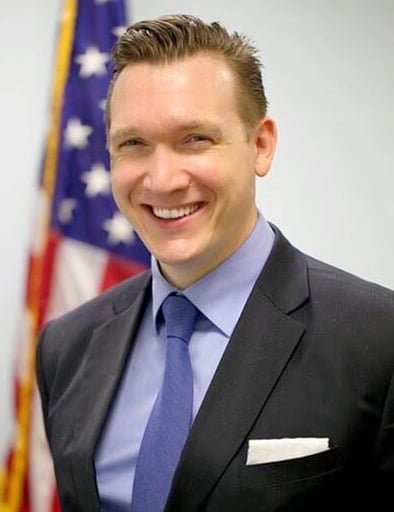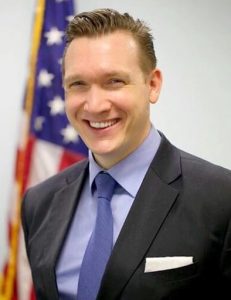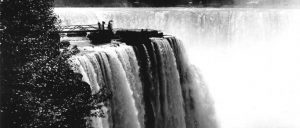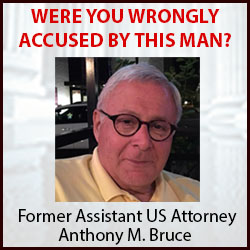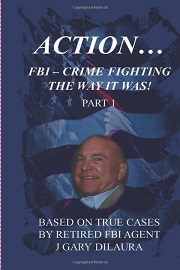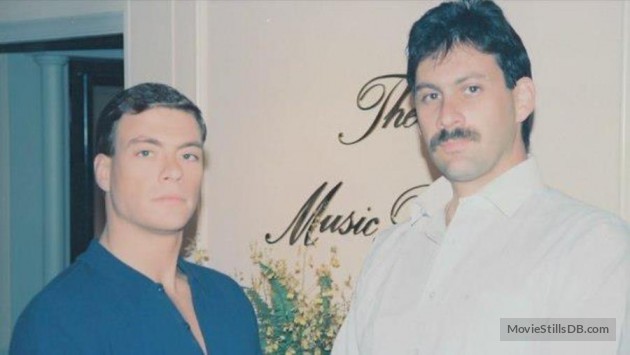One sinister, one heroic: Robert Moses and Frederick Olmsted
by Nate McMurray, Supervisor of Grand Island
In the last several months I have heard the name Olmsted thrown around a lot. Several people have actually told me that he designed West River Parkway and thus it must be preserved. Did he? And who was Frederick Law Olmsted really? What did he want? And what was his relationship to Buffalo, Niagara Falls, and Grand Island?
Olmsted designed many of America’s greatest public parks, including Central Park in New York City. And when I say design, I mean design. Central Park used to be a swamp, not a series of pastoral fields, hills and groves. Olmsted engineered the park, rather than preserve its natural state. He believed in manicuring nature to reflect the sort of visions you might find in great works of romanticism. And he did this for a purpose: to create spaces where we can reflect on the purpose of life, goodness, and greatness.
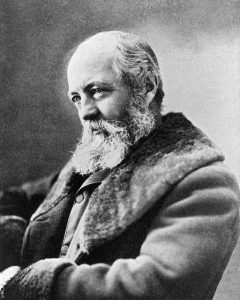
Parks like Churches
Olmsted wrote in his piece “Public Parks and the Enlargement of Towns” that parks could be like churches, meaning places for spiritual regeneration. He was also a man of the people. He had visited England and witnessed firsthand the glorious estates of British aristocrats, which were so well maintained and beautiful. Olmsted believed every man should have equal access to such places for the betterment of society.
It took some time for Olmsted to find his vision. Like many of us, he tried (and often failed) many things before finding success. He was a writer, a publisher. And he even traveled to China as a sailor.
Olmsted was saddened by what he saw at Niagara Falls
After experiencing the great American West and helping to preserve Yosemite in California, Olmsted visited Niagara Falls. He was disheartened by what he saw as the “repulsive” condition of the falls. On both sides it was covered by a collage of small hotels, mills, carpentry shops, bath houses, burlesque shows, large hotels and fences. It was a cluttered mess of ruin and confusion. Sound familiar?
Olmsted discussed the matter with his contemporary, the great painter Frederick Edwin Church, who painted one of the most dramatic and beautiful pictures of Niagara ever created. Both men were members of the famed Century Club in New York City. That club was an eclectic and elite mix of some of America’s most influential captains of industry and artists. Together, they developed a movement to “free Niagara.” They called themselves the “reservationists.” And Olmsted began a multi-year letter campaign to convince the public that Niagara must be “reserved” as a natural sanctuary for all mankind and not a circus of carnal delight.
Olmsted’s rules
Olmsted eventually designed the parks around the falls. In doing so, he adhered to a few simple rules. He wanted carriages kept far from the water. He believed that you must “get into” nature, not just coast by it. He was most disturbed that tourists to Niagara Falls far too often just drove by, looked out of their carriage, and then moved on quickly to watch the freak shows and dancing girls. In his design, the area around the falls featured winding trails and benches for contemplation. Further, he did not want concessions near the falls, no more than Jesus wanted merchants in the temple.
Today, Niagara is not what Olmsted imagined. While Luna Island in particular is amazing (you can walk right up to the falls and look straight down into the overpowering cascade), concessions remain, as do parking lots of cars. In my opinion, wouldn’t it make sense to move some of that into the city, where it could help invigorate the city?
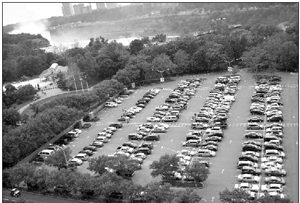
Moses vs. Olmsted
As anyone who knows Olmsted can quickly figure out, Olmsted did not build the Parkway.
The Parkway is the work of Robert Moses who had little regard for natural preservation or the preservation of neighborhoods.
Olmsted remains one of the most revered artists and thinkers in American history. His foresight and vision helped preserve places like Central Park, an oasis meant to help us commune with nature even in the most complex and demanding urban settings. This is also like our own Delaware Park (also designed by Olmsted), which is a place full of all manner of people flowing in and out from all walks of life right in front of Buffalo’s most prime real estate.
While Olmsted desired to turn precious outdoor spaces into natural cathedrals for contemplation and self-improvement—Robert Moses was a cunning man. He designed some beautiful parks and great works of infrastructure. But his personal history is one of graft and corruption.
Moses usurped taxpayer money to create a virtual nation state within the bureaucracy of New York State government, which remains to this day. He ruled for decades, making at a whim his appointed elite as rich as Croesus while crushing and ruining the lives of political foes. Among his henchmen were a crew of dossier collecting goons peeping in keyholes and spying though windows. And what did Moses use this power for? He tore up communities, built playgrounds and apartment complexes for the rich over the homes of the poor, and robbed Western New York.
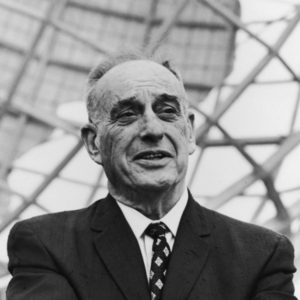
Moses legacy:
“The $45 million Kensington Expressway tore up Frederick Law Olmsted’s tree-lined Humboldt Parkway, claimed hundreds of homes in previously stable neighborhoods, ripped a trench in the ground that emphasized the city’s racial division, and diverted automobile traffic from the East Side’s once-thriving business strips to a limited-access expressway that shuttles commuters from downtown Buffalo to the northern suburbs in about 10 minutes on a clear day.”
–Artvoice, 3 March 2010
“The Robert Moses Parkway was a mistake. It was a mistake. You don’t block off your greatest asset, which is your waterfront. You don’t close off communities. It was a mistake.”
–Governor Andrew Cuomo,
“Moses…was a shortsighted man. For him, getting visitors to come to town meant building roads they could come in on. It was partly the mania of the automobile age, and partly Moses’ personal blindness to quality-of-life issues beyond infrastructure…With the opening of [the Robert Moses Parkway], the Niagara Reservation, for which Olmsted…fought so hard, was separated from downtown by four lanes of traffic.”
–Ginger Strand, Inventing Niagara, page 283
“This history of nearsighted planning begins, not surprisingly, with Robert Moses, who cut deep into the city’s tax rolls by replacing private hydropower companies with the state-run New York Power Authority and stuck a parkway between the city and the gorge.”
Sarah Laskow, www.politico.com, 5 June 2014
New Yorkers hate Moses, but Western New Yorkers hate him even more
There have been endless volumes written about Moses’ terrible legacy. But what he did to Western New York is particularly horrible. By the time he got to the Niagara River he was nearly mad with power. He used a system of cronyism and power mongering to force his vision on our community. And that vision was to create expressways and parkways that allowed automobiles easy access to the waterfront, but kept people off of it. These roads helped kill Buffalo and Niagara Falls by breaking them into pieces and creating racially divided zones of dead economic activity. To make matters worse, Moses snatched local control away from the power project and diverted all of the monies from it downstate to support his expanding empire. It’s named after him for a reason, but that reason is not a good one.
It was Moses who ripped up Olmsted parks. It was Moses who separated us from the Niagara River. And it was Moses who permanently damaged our tourism industry and wreaked havoc on our local economy. And he did all of this while making millionaires out of his friends and flying around the country on private jets to host lavish parties for his cronies.
It’s time to erase his legacy and create our own
So if you are still wondering why I think the State’s preferred plan to close the West River Parkway on Grand Island makes sense, please read about Robert Moses and modern trends on traffic flow. Then consider that the West River Parkway closure will help restore and correct a crime perpetrated on this community by a downstate political boss. It will be step one in providing island-wide access to the waterfront.

